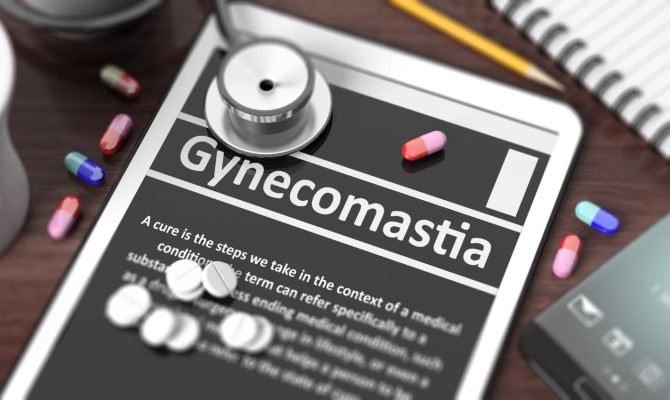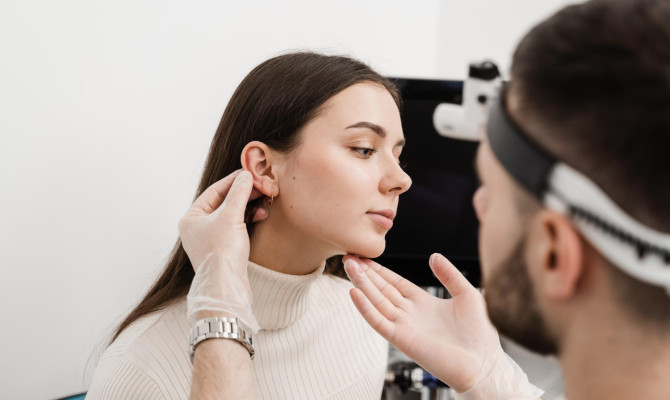Cirrhosis : Reasons, Symptoms, and Management

- Cirrhosis
- 14 Aug 2023
Overview
What is Cirrhosis ?
An advanced form of liver disease called cirrhosis causes the liver to become permanently damaged and replaces good liver tissue with scar tissue. The liver cannot function effectively because of scar tissue.
The liver can be harmed by numerous assaults, such as viruses, poisons, genetic diseases, or autoimmune processes. With every wound, the liver develops scarring or fibrosis, although initially retains its functionality. After a long-term insult, the majority of the liver tissue gets scarred leading to a reduction of functionality and the formation of cirrhosis. 1What is cirrhosis| Researched based study from Nih.gov In the early stages, patients may not display any symptoms. Liver failure develops when cirrhosis progresses. 2What is cirrhosis | Researched based study from Niddk.nih.gov

Symptoms
What are the Symptoms ?
Cirrhosis frequently goes unnoticed until major liver damage has occurred. When symptoms emerge, they may include the following:
- General fatigue.
- Appetite loss.
- Sudden weight loss.
- Nausea.
- Itchy skin.
- Stools with a pale color.
- Brown or orange urine.
- Blood in the stools.
- Easy Bruising.
- Redness in the palms.
- Disorientation or slurred speech.
- Collection of fluid in the abdomen.
- Swelling of the ankles, feet, or legs.
- Blood vessels that resemble spiders on skin.
- Yellow coloring of the skin and eyes.
- Fingertips enlarge and are more rounded.
- Lack of sex drive.
- Lack of menstruation unrelated to menopause in women.
- Sudden enlargement of the breast & shrinkage of the testis 3What are the symptoms | Researched based study from Nih.gov in men.
Stages
Stages of cirrhosis
Cirrhosis is classified into two stages Reversing from the stage of decompensation to compensation is achievable if discovered and treated early enough.
Compensated cirrhosis
- Patient displays no symptoms.
- Liver scarring may exist, but it has not advanced to the point where it’s producing symptoms.
Decompensated cirrhosis
- At this stage, the majority of symptoms, including ascites and jaundice, manifest.
- In this stage, the patient might be able to get his liver back to the compensated stage, if the factors that contributed to the development of cirrhosis at the initial place are managed. For example – if alcohol consumption is stopped.
Reasons
Reasons of Cirrhosis
The most common reasons of liver cirrhosis, are as follows:
- Long-term alcohol use.
- Persistent viral infections of the liver – Hepatitis B and C infections.
- Fatty liver associated with obesity and diabetes.
Other common causes may include:
Autoimmune hepatitis
- When an individual’s immune system begins to assault healthy liver tissue, damage results.
Hereditary
- Alagille syndrome – some individuals are born with fewer bile ducts and it affects bile flow and results in jaundice.
- A lack of Alpha-1 antitrypsin may result in abnormal protein accumulation in the liver.
- Hemochromatosis is a condition where the liver stores extra iron.
- Wilson disease when the liver stores extra copper.
- Cystic fibrosis in which the liver accumulates sticky, thick mucus.
- Glycogen storage disorders, in which the liver is unable to store or digest glycogen, a type of sugar.
Conditions that affect or clog the liver’s bile ducts
- Primary biliary cholangitis – bile ducts suffer damage that lasts a lifetime due to injury and inflammation.
- Primary sclerosing cholangitis – bile builds up in the liver as a result of bile duct inflammation, causing the ducts to scar and constrict.
- Blocked bile duct – results in infections and product buildup in the liver.
- Biliary atresia – inadequately developed or obstructed bile ducts in newborns, resulting in injury, scarring, liver tissue loss, and cirrhosis.
Some medical conditions which may also leads to Cirrhosis are :
- Infections – like Syphilis, Hepatitis, Brucellosis, etc.
- Medications – like Acetaminophen, Methotrexate, Isoniazid, etc.
- Chronic heart failure – makes the liver’s fluid buildup worse.
- Rare diseases – Amyloidosis, where liver function is disrupted by abnormal deposits of a protein called amyloid.
Vulnerability
Who is at risk?
If one or more of the risk factors listed below apply to a person, their likelihood of developing liver cirrhosis may rise:
- Gender – affects women more often than males. 4Who is at risk | Researched based study from Nih.gov
- Age – Those between the ages of 30 and 60 have a higher risk.
- Having a family history of liver disease increases the risk.
- Excessive alcohol consumption.
- Fatty liver is a liver that has accumulated fat.
- Too high blood cholesterol levels.
- Virus-related hepatitis in the past.
- Is an uncontrolled diabetic.
- Being overweight.
- Use shared needles, to inject drugs.
- Tattoo and body piercing needles that have not been properly sterilized.
- Engage in unprotected sex.
Prevention

How to prevent cirrhosis ?
The likelihood of getting liver cirrhosis may be decreased by taking the following steps:
- Reduce or stop drinking alcohol.
- Give up smoking.
- A balanced, low-fat diet should be followed.
- Avoid consuming raw seafood, especially clams and oysters to avoid bacteria causing serious illness.
- Reduce the quantity of salt in the diet and opt for different seasonings for taste.
- Continue to maintain a healthy weight. Being obese can harm the liver.
- Engage in regular exercise.
- Reduce the risk of getting hepatitis B and C infection by not sharing needles or by having protected sex.
- Adhere to medical advice for managing obesity, blood sugar level, high blood pressure, high levels of bad cholesterol (LDL), low levels of HDL (good cholesterol), etc.
- Refrain from using high doses of acetaminophen 5How to prevent cirrhosis | Researched based study from Nih.gov as well as nonsteroidal anti-inflammatory drugs (NSAIDs) including ibuprofen, and aspirin as they may damage or impair liver health.
- Get frequent medical checkups.
Diagnosis
Diagnosis
The doctor may first ask about the symptoms, then about the patient’s lifestyle, history of any viral diseases, and family history of liver issues, followed by an examination of the individual and a few tests, as follows:
Physical examination – to look for :
- The skin’s blood vessels, resembling tiny red spiders.
- The skin or eye whites turning yellow.
- Bruising of the skin.
- Red colored palms.
- Abdominal swelling or pain.
Blood tests may show the following :
- Decreased blood clotting factor, albumin levels & sodium levels.
- Elevated liver enzyme levels indicate inflammation.
- An elevated iron level indicating hemochromatosis.
- The presence of autoantibodies in cases of autoimmune hepatitis.
- An increase in bilirubin.
- A high creatinine level could be a sign of advanced cirrhosis or kidney disease.
- A full count of blood to check for infections and anemia brought on by internal bleeding.
- A test for viral hepatitis to detect hepatitis B or C.
- Liver cancer is present when alpha-fetoprotein levels are elevated.
Imaging tests :
- May comprise a magnetic resonance imaging (MRI), abdominal ultrasound, and computed tomography (CT) scan.
- To examine the liver’s size, shape, and texture.
- The quantity of liver fat, the amount of fluid in the belly, and the extent of scarring can all be assessed.
- The degree of stiffness and fat content in the liver is measured using a specialized ultrasound technique called transient elastography.
Endoscopy :
- Done to look for bile duct issues, swollen veins, or bleeding in the intestines, stomach, or food pipe.
Biopsy :
- Using a microscope, liver tissue from a biopsy is examined.
- It can establish the amount of liver damage or enlargement, identify additional causes, and confirm the diagnosis of cirrhosis.
- Also used to rule out liver cancer.
Complications
Complications:
Cirrhosis of the liver can result in the following complications: 6Complications | Researched based study from Nih.gov
- Portal hypertension – As the normal flow of blood through the liver slows down, the vein that carries blood to the liver experiences an increase in pressure.
- Hepatic encephalopathy – when the injured liver is unable to eliminate toxins from the intestines, the toxins start circulating in the bloodstream and accumulate in the brain, confusion, changes in behavior, and sometimes even coma.
- Abdominal and leg swelling – caused by fluid buildup in the belly and legs as a result of elevated portal vein pressure.
- Jaundice – Because of liver damage, not enough bilirubin is removed from the blood. It causes the skin, eye whites, and urine to become darker and yellow.
- Splenomegaly – The spleen may become swollen with platelets and white blood cells as a result of portal hypertension.
- Infections – Cirrhosis makes it harder for a person to prevent and fight dangerous infections such as bacterial peritonitis.
- Hypersplenism – This condition results in the fast and untimely death of blood cells due to a hyperactive spleen.
- Bleeding – Due to increased pressure from portal hypertension, smaller veins may rupture and result in severe bleeding.
- Malnutrition – The body may have a harder time processing nutrients as a result of cirrhosis, which can result in fatigue and weight loss.
- Bone disease – Some cirrhotic individuals experience bone thinning and an increased risk of fractures.
- Liver failure – As its name suggests, liver failure happens when the compromised liver is unable to carry out all of its essential duties.
- Multiple organ failure – Some people end up with multiple organ failures, such as kidney failure, 7Complications | Researched based study from Nih.gov heart failure, or respiratory failure.
- Increasing risk of liver cancer – Cirrhosis of the liver is more commonly present in those who develop liver cancer. 8Complications| Researched based study from Nih.gov
Management
Management
There is no known treatment for cirrhosis, although there are ways to slow or stop the disease’s progression and they may include:
Non- Surgical management
- Alcohol deaddiction – If someone already has liver cirrhosis, any amount of alcohol is toxic to their liver. One can sign-up for an alcohol de-addiction program if they are unable to stop drinking alcohol.
- Hepatitis B or C – Antiviral drugs will be recommended by a physician.
- Non-alcoholic fatty liver disease (NAFLD): Making lifestyle adjustments like dietary changes and frequent exercise may help.
- Medicines may be used to manage hereditary diseases like alpha 1 antitrypsin insufficiency.
- Immune suppression – medications used to suppress the immune system for managing autoimmune hepatitis.
- Additional medications can be used to manage specific symptoms like pain, exhaustion, and itching.
- Alternate prescription – The doctor will check all drugs the patient is taking to see if any are affecting their liver and, if so, discontinue the prescription, lower the dosage, or switch to a different medication if possible.
- Nutritional supplements – in patients with cirrhosis-related malnutrition.
- Portal hypertension – medicines to reduce high blood pressure in the vein, that carries blood to the liver.
- Infections – Bacterial infections may be managed with antibiotics. Vaccinations against hepatitis, pneumonia, and influenza may also be given to the patient.
Surgical management
- If the liver’s bile ducts are obstructed or damaged, surgery may be necessary to clear the obstruction or fix the damage.
- Liver transplantation surgery may be recommended in severe cases of cirrhosis, in which the damaged liver is swapped with a normal liver from a donor.
Outlook
Outlook
Liver disease scarring produces long-term damage but, it is still possible to have a long life. There are numerous treatable or manageable causes and problems that can result in cirrhosis. The disease progression can be slowed down or stopped if the liver condition or complication is identified early and successfully treated.
Any feedback on this article?
 This Articles content was accurate
This Articles content was accurate Very Informative Article
Very Informative Article I have a question or a comment
I have a question or a comment
 This article contains inaccurate content
This article contains inaccurate content This article was not helpful
This article was not helpful I have a question or a comment
I have a question or a comment
We appreciate your helpful feedback!
Checkout our social pages
References
-
National Institutes of Health
Hepatic Cirrhosis | Overview
-
National Institute of Diabetes and Digestive and Kidney Diseases
Cirrhosis | Overview
-
National Institutes of Health
Mechanism of hypogonadism in cirrhotic males. | Symptoms
-
National Institutes of Health
Liver Disease in Women: The Influence of Gender on Epidemiology, Natural History, and Patient Outcomes
-
National Institutes of Health
Drug-Induced Acute Liver Failure: Results of a U.S. Multicenter, Prospective Study
-
National Institutes of Health
Improving Medication‐Related Outcomes in Chronic Liver Disease | Complications
-
National Institutes of Health
Hepatorenal syndrome | Complications
-
National Institutes of Health
Epidemiology of HCC: Consider the Population | Complications






































